Chris Parkin has got it bad for this carbon fibre creation from Sauer - the 101 Highland XTC in .308 Win has all the makings of a modern classic
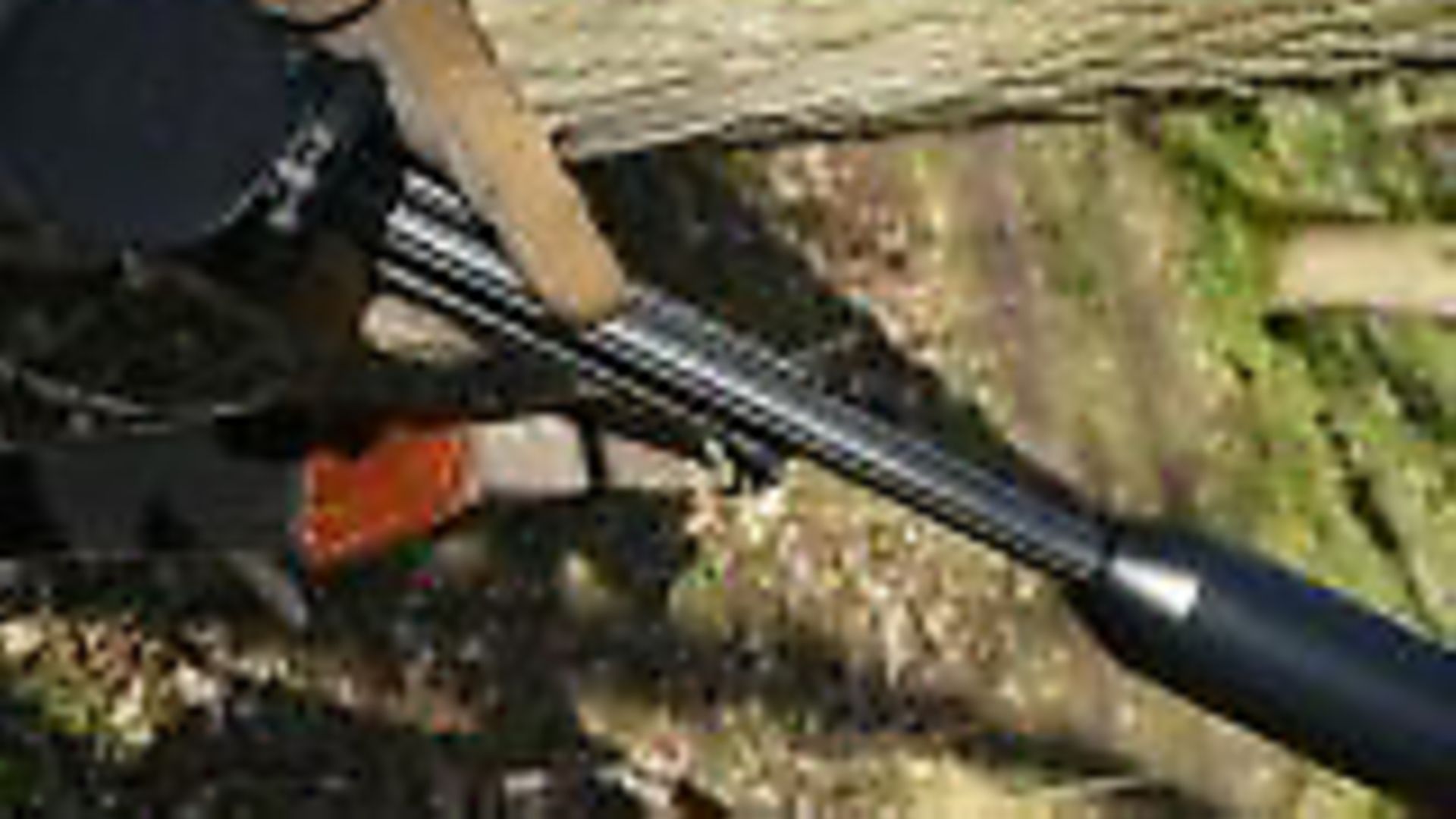 credit: Archant
credit: Archant
SAUER 101 HIGHLAND XTC .308 WIN - BRIEF OVERVIEW
PROS: Incredible handling character; Serious attention to detail on the stock lamination; Usual Sauer metallic and mechanical reliability; A faultless trigger on a hunting rifle
CONS: No left hander; I think a little tactile addition to the grip areas would benefit
OPINION: I think I might just have to say this is an epiphany rifle, my desires have changed and I’m not sure I want to look back after sampling this incredibly well-balanced stalker and, it’s not just about weight!
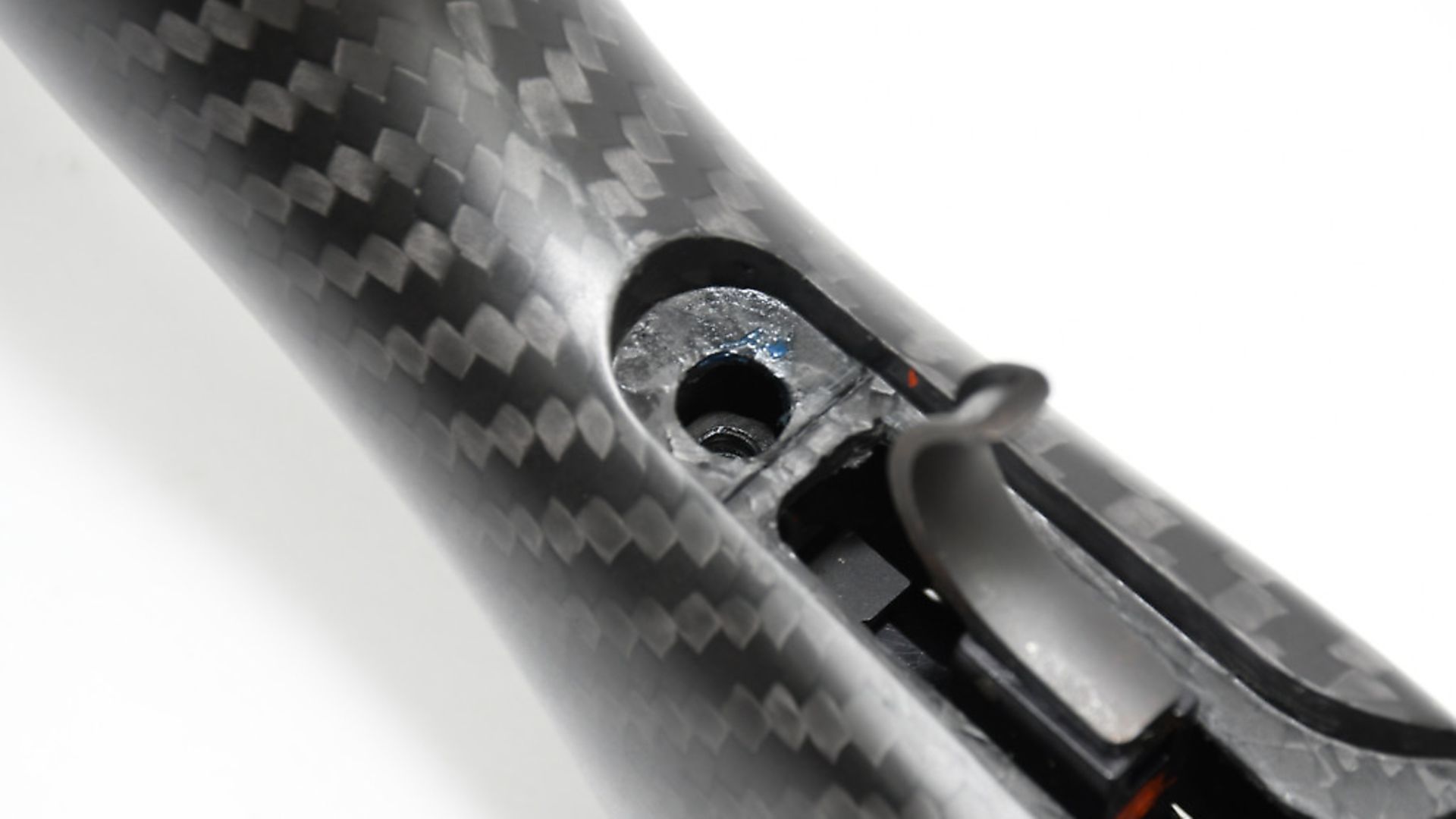 credit: Archant
credit: Archant
Calibre: 308 on test (.243 Win., 6,5x55 SE, .270 Win., 7x64, .30-06 Spr., 8x57IS, 9,3x62, 7 mm Rem. Mag., .300 Win. Mag. Also available)
Weight: :2.5kg/5.5lbs (rifle alone)
Barrel length: :20” (510mm) 22”/ 56 cm magnum calibres
Coating: :DLC
Twist rate: : 1-11”/279mm
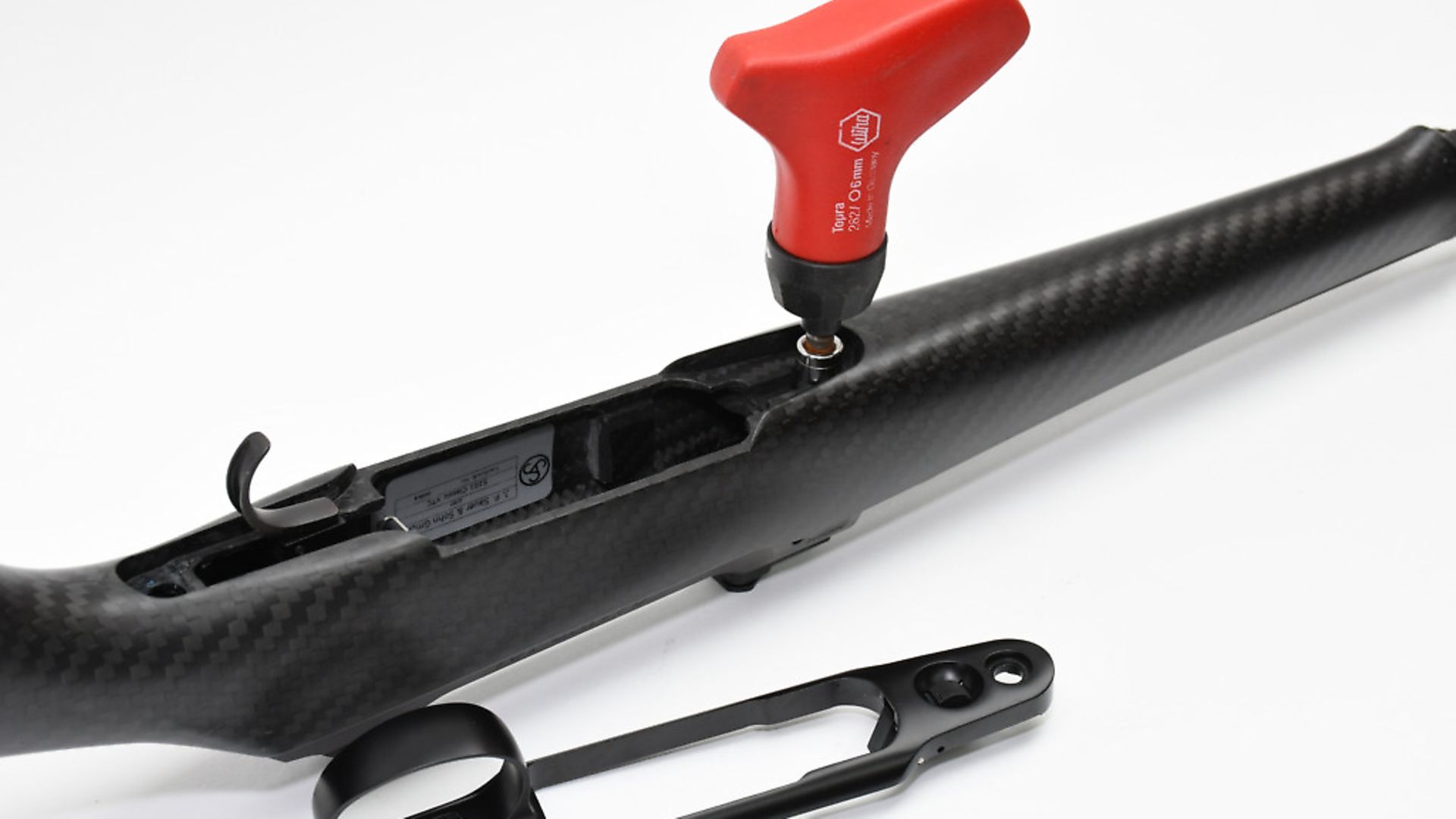 credit: Archant
credit: Archant
Overall Length: : 1069mm/42”
Magazine capacity: 5+1 (4+1 in magnums)
TriggerSingle stage: 950gr/2lbs
Length of Pull: 363 mm/14 1/4”
Scope mounting: Drilled and tapped for any Rem 700 Long Action compatible bases
Warranty: 10 years
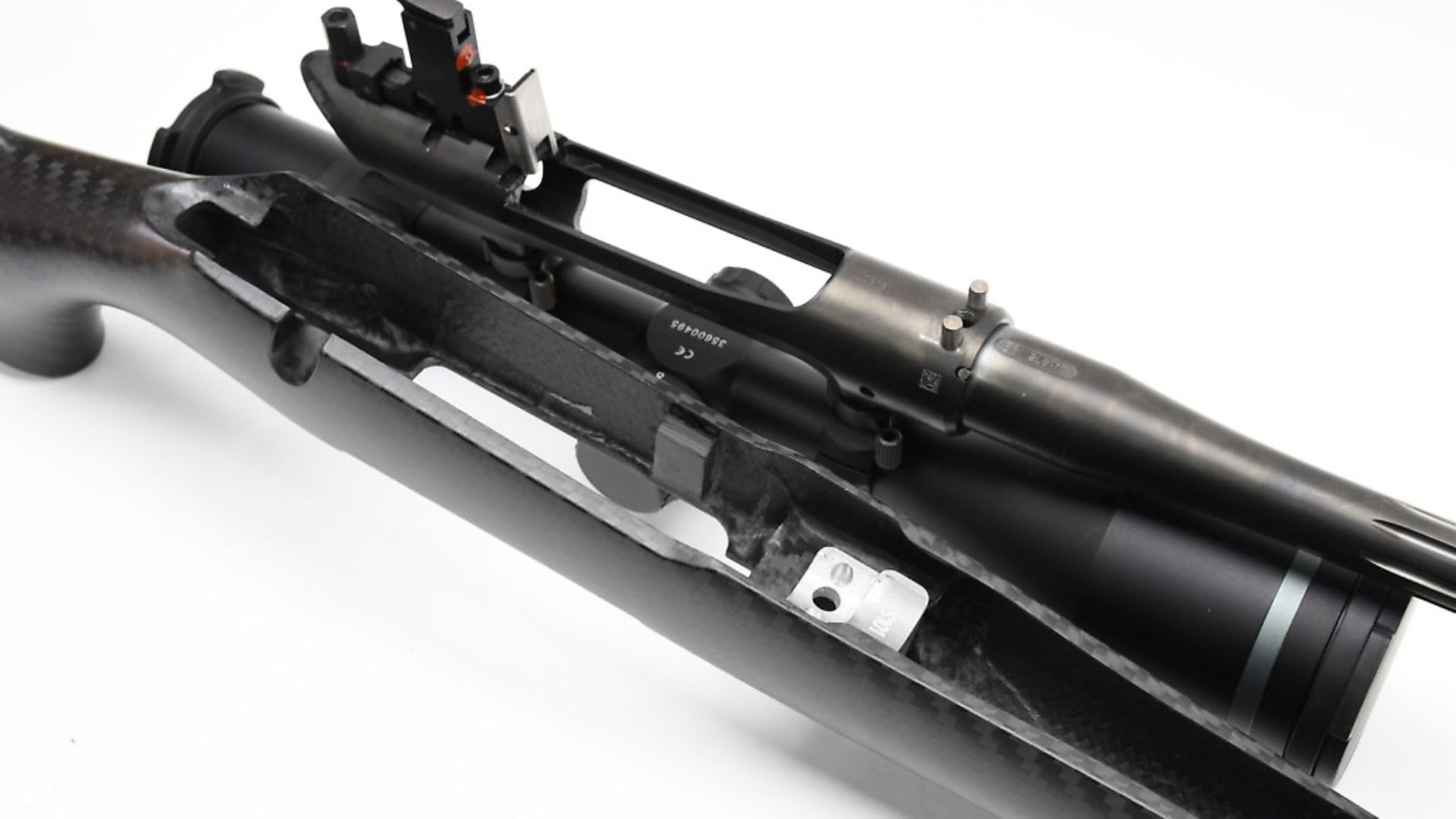 credit: Archant
credit: Archant
RRPs
101 Highland XTC: £3,207.00
Blaser Shooting Sticks: £243.00
Hexalock Mounts: £179.00
Titanium moderator: £475.00
Not used but also available… Flexpro Bipod: £571.00
CONTACT: www.blaser-group.com 01483 917 412
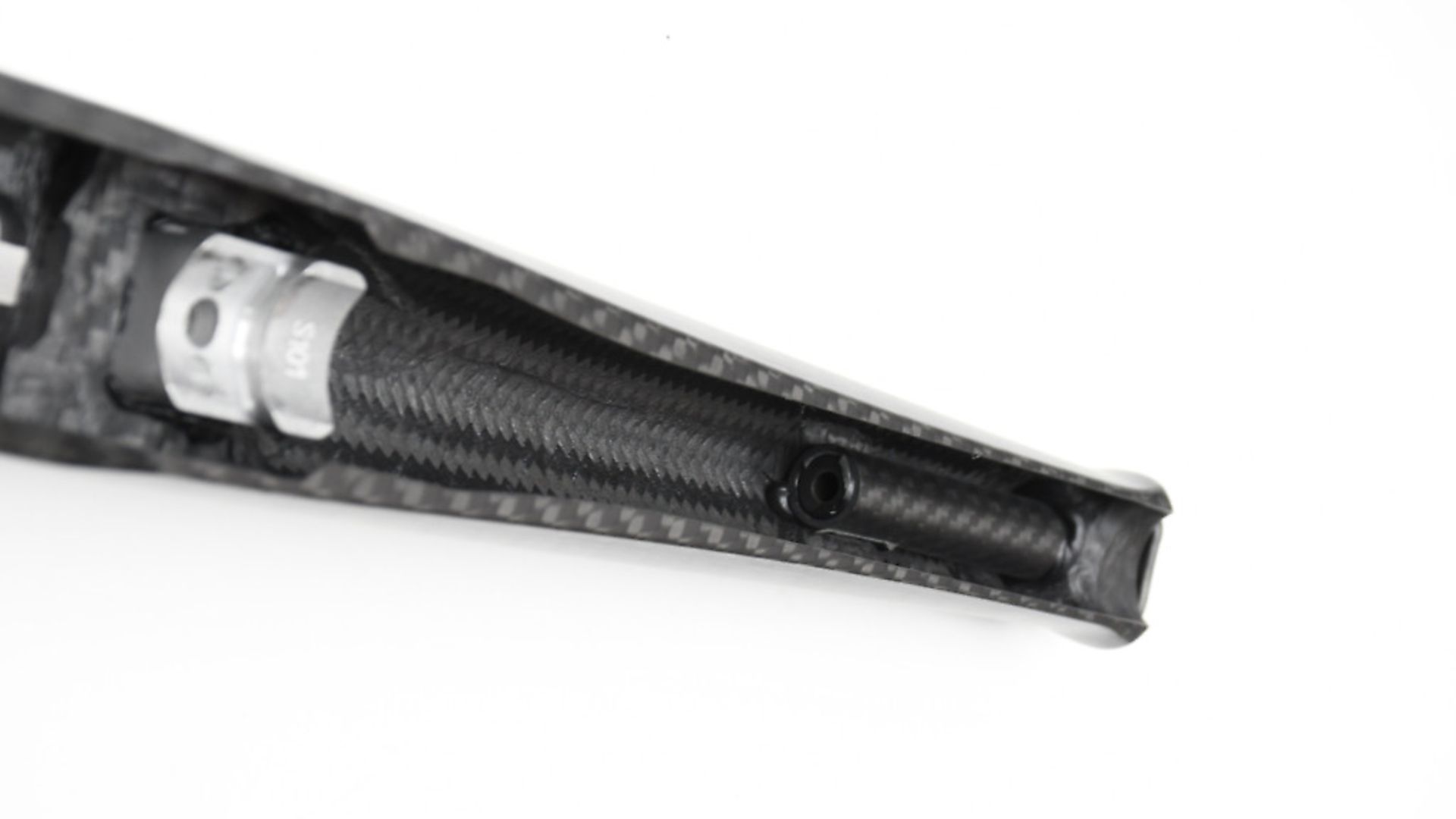 credit: Archant
credit: Archant
AMMO
Sako and Federal Ammunition
GMK 01489 579999 www.gmk.co.uk
Hornady ammunition
Edgar Brothers 01625 613177 www.edgarbrothers.com
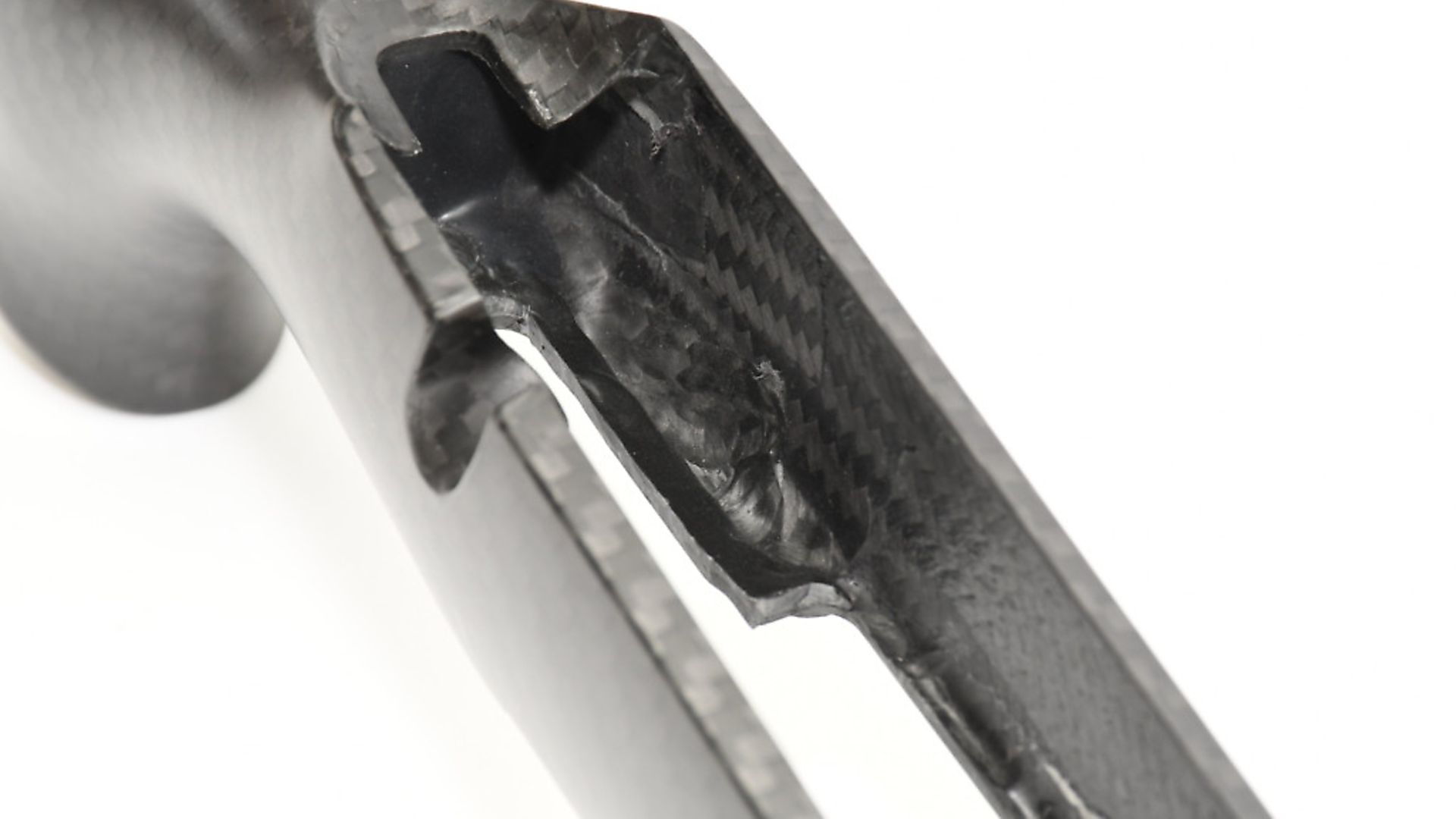 credit: Archant
credit: Archant
SAUER 101 HIGHLAND XTC .308 WIN - IN DEPTH REVIEW
Sauer are not to be underappreciated for setting new targets, so it was great to see their take on an attempt to set an in-house minimum weight record. For Germany’s oldest gun maker, that is quite some challenge and although weight is easy to shed, their reputation dictates it cannot come at the cost of the marque’s reputation for accuracy, reliability and handling.
The core Sauer 101 action has been with us for over seven years now and I have had a lot of hands-on experience with them in many of the model variants. It caught my attention early on after its inclusion at the Zeiss/Sauer/RWS field shoots in Ulfborg, Denmark that showed the core capability. The 6-lug bolt shows a 60° lift for rapid cycling, coupled to a push-feed face with twin ejectors for energetic brass disposal.
Combine that with the new (at that time) twin-column-feeding polymer magazine that’s been subsequently shared across the family, and what you get is a factory rifle with great modern innovation, serious shootability (over 500 rounds in two days) and no flaws exhibited. I trust Sauer and they always work right out of the box.
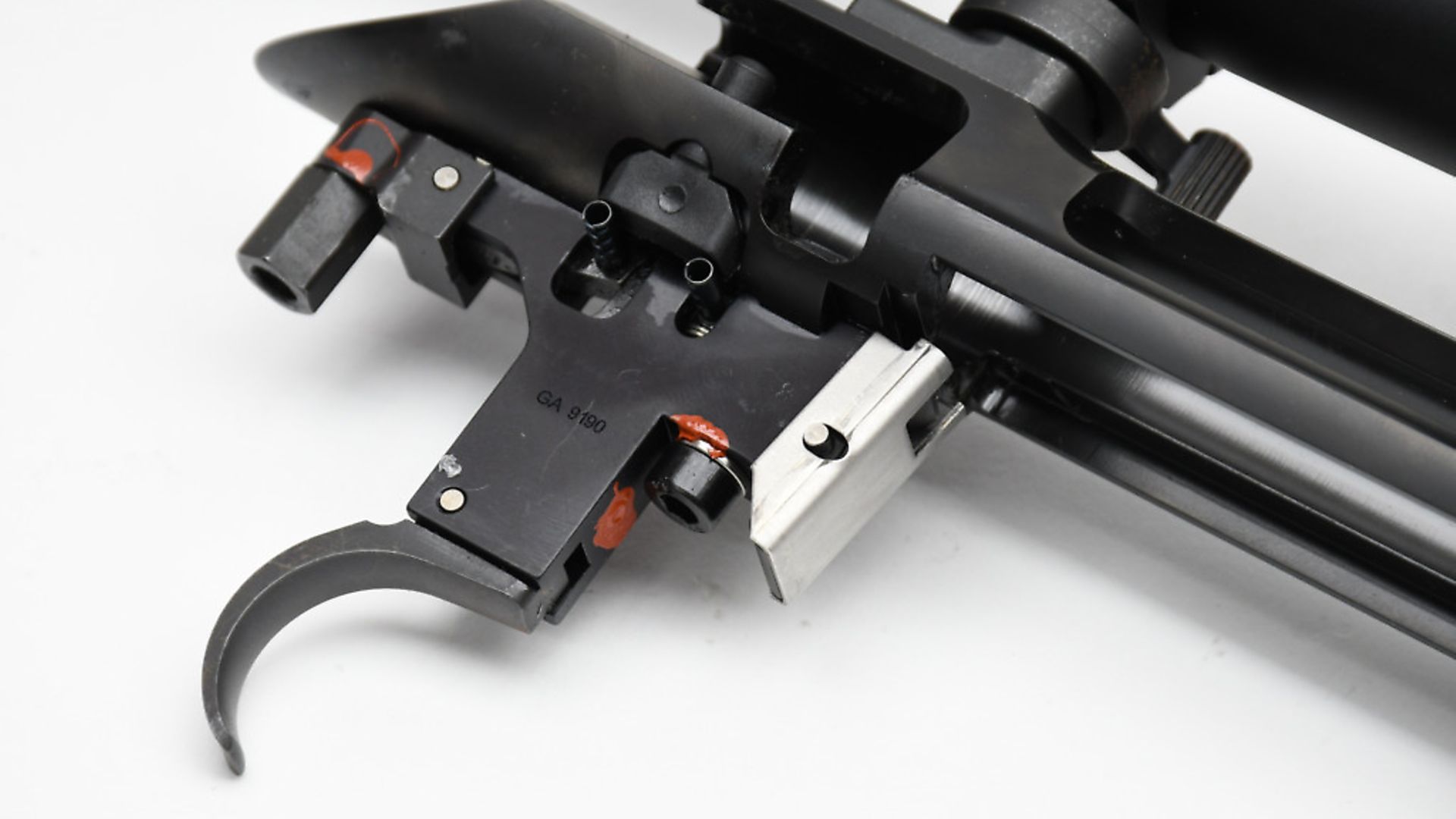 credit: Archant
credit: Archant
The mechanics
The Highland XTC’s cold-hammer-forged barrel is 51cm long with a 17mm diameter just behind the crown and 15x1 thread for a moderator. This is exceptionally well machined with no chatter marks to the steel before a small shoulder raises the diameter for the long fluted sweep up to the barrel reinforce.
The six bolt lugs lock into the barrel for security with the tube showing a free float for harmonic freedom. The cylindrical action bridges share a profile with Remington 700. Sauer Hexalock bases and 30mm mounts were supplied, but you can fit any compatible mount or Picatinny rail that suits the action’s dimensions.
Those twin plungers give consistent direction to brass as it is thrown from the upper right side of the receiver staying well clear of scope turrets or dial caps and avoiding the dreaded bounce back onto the follower, potentially causing a misfeed.
All steel shows a uniform deep matte finish with DLC finish throughout for corrosion resistance, not just from the weather and skin residue, assuring long-term good looks. Proof marks and action designations are minimal and discreetly engraved – a far cry from the deep rolled detail and safety warnings brutally assigned by some competitors.
The bolt-handle is the first stage in appreciating the intrinsically good design of Sauer’s ergonomics. the radial grooves have gone from the now smooth spherical handle allowing a good hold without any unnecessary machining to aid the resistance of grime where no radial grip is required. A nice move, as there’s no longer any chance of snagging fingers or gloves on a pointless cosmetic addition.
The handle is swept back slightly to rest just above the firing hands fingers, allowing an automatic rising flick to open and recock the rifle as the hand withdraws after each shot, and yet again, the full diameter bolt with just a single raceway along its body (to ride the bolt-stop and anti-rotation claw) enables slick travel with no possibility of jamming or stutter. The lugs are split into two rings of three for the 6-lobe layout with abutments themselves part of the barrel, making the receiver almost a plain tube.
A two-position safety catch sits at the rear of the bolt with forward/up for fire and back/down for safe. This has a small central locking button, which is automatically pressed when your thumb is positioned on top to actuate, making for a simple, silent and effective safety.
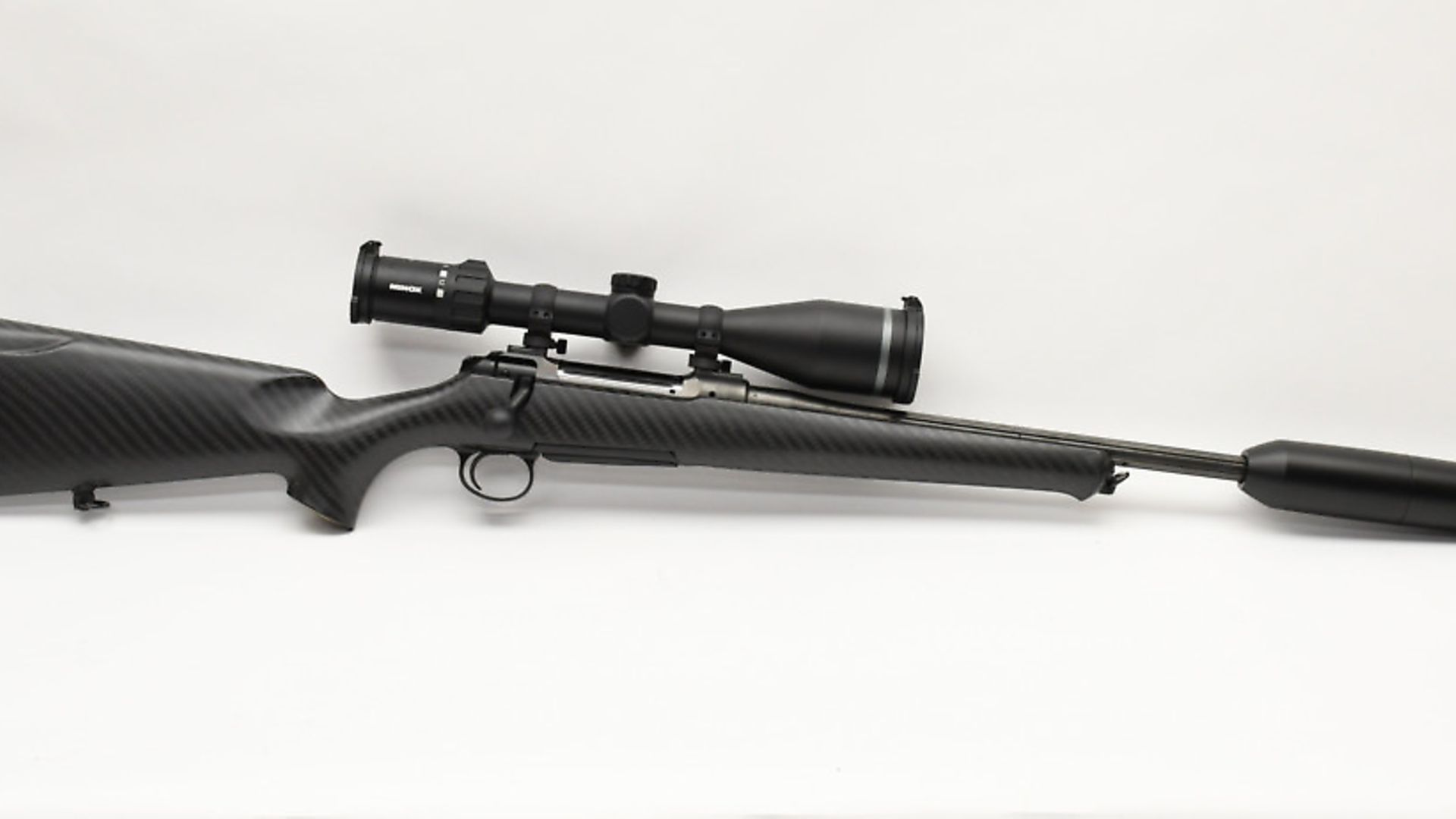 credit: Archant
credit: Archant
Handling
Although locked with the safety on, the bolt can be opened to cycle the action by pressing the release catch to the right side. I found this to be particularly effective as a right-handed shooter. The Highland also shows fluting to the bolt, which reduces weight to a tiny extent, but perhaps more importantly assists in shedding environmental debris while retaining minute quantities of lubricant. Make your own decision on that one – I tend to think they rank 2,3,1 in that order of importance, especially where mud, snow and ice are involved.
Sauer’s excellent 1-2kg adjustable trigger hangs below the action in a spacious aluminium trigger guard. This deeply curved and smooth blade is factory set at 950g, delivering exceptionally nice pulls, consistently judged with minimal overtravel straight from the box.
Longer term test examples of these mechanics on other 101s have shown this to be stable and consistent for 2,000 or so rounds – and I’ve been really happy with the ones I’ve tested. There is plentiful blade weight and bulk to get a good tactile feel in gloves, and in cold weather you can slide into the guard in heavy gloves without any undue snagging.
Adjustment requires removal from the stock and mine showed threadlocked Allen screws, so I took the hint and left it well alone, not that I had felt any need for adjustment. A trademark polymer twin-column mag holds five rounds in .308 plus one in the chamber if needed. These press load straight in from the top whether the mag is in or out of the gun, so no issue to top up singularly.
The push-button release catch is on the underside and in front of the well, with the mag dropping under its own weight.
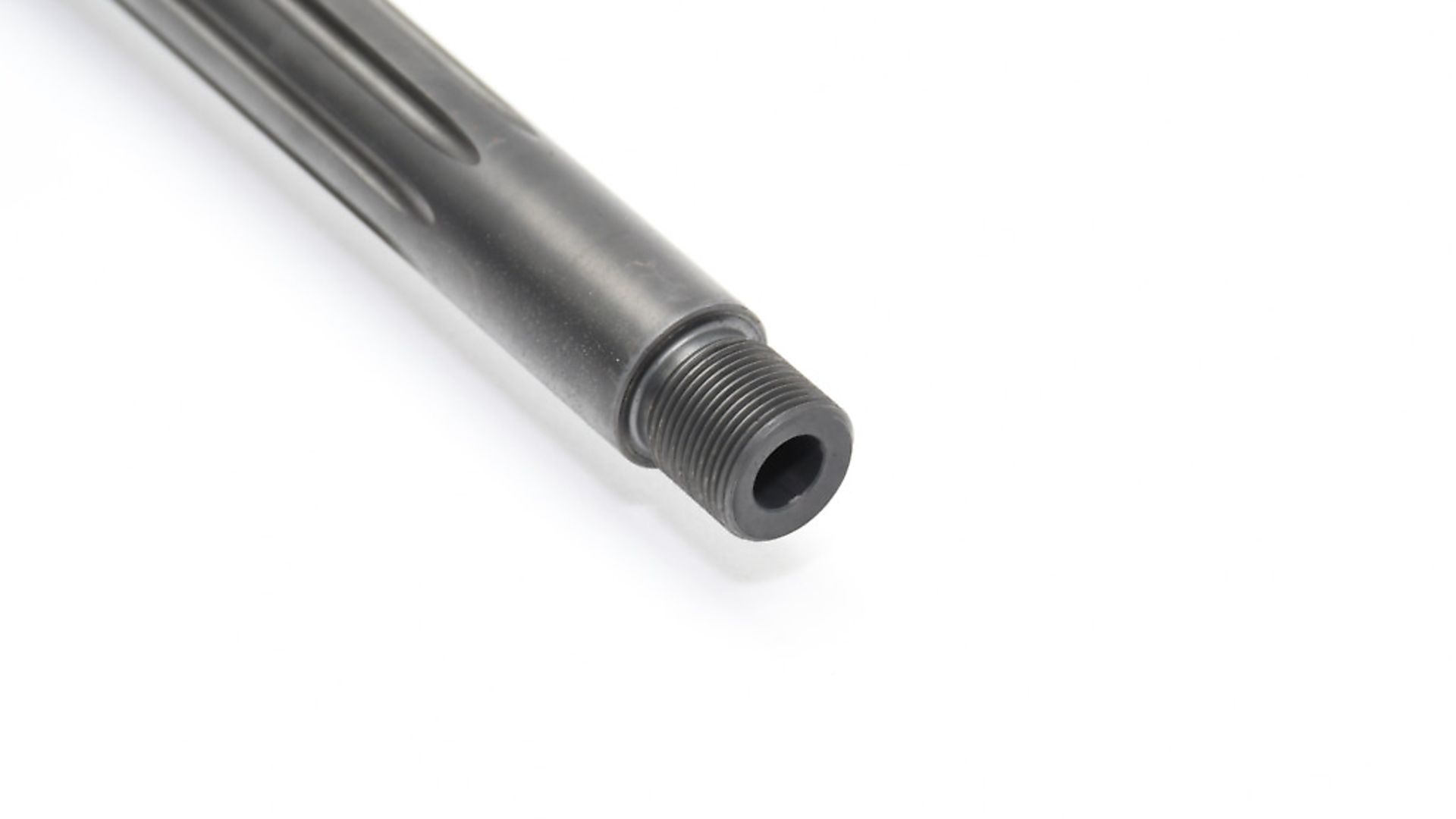 credit: Archant
credit: Archant
Drop-dead gorgeous
So, now we come to the showstopper, the visual draw of the rifle, the carbon fibre stock. Well, it is a beauty on the outside with not a single mark showing (especially after all that handling at the show). The finish is satin smooth from fore-end to recoil pad with just the slim, firm rubber pads for the twin QR sling studs (also supplied) disrupting the sleek and shapely form.
These securely click in and out of the rifle and interestingly, although not all 101s are compatible with Sauer’s Flexpro bipod, the Highland is. Removing the stud in the fore-end’s Schnabel tip allows the bipod to slide into it and click in position.
This stock is based around the ErgoMax layout and dimensions, with an excellent slim comb that rises quite high for cheek comfort and has that important down-slope toward the action, which upon recoil, effectively reduces applied cheekbone pressure through the recoil pulse. The pad is 12.5mm thick, with chequering for grip with its firm texture providing snag-free mounting and none of the disconcerting sponginess of ‘recoil reducing’ pads that feel like a wet sponge in your shoulder with little appreciation of position consistency when precision is required.
Broad areas show uninterrupted laminated warp and weft patterns of the carbon, which is hand-laid. Until you remove it from the action, you don’t appreciate the true design and manufacturing details of this hand-made item. Twin action screws spanning the magazine well are removed with an Allen key to release the floorplate, exposing the 9mm nut underneath the front action bridge.
Remove this with a socket wrench and the action releases from the stock, exposing the critically important ‘underwear’ within. A machined aluminium bedding block precisely cups the front action bridge under the barrel reinforce with twin recoil transfer pins slotting into it. The rear of the action actually floats free from the stock, so all the tension is held on that front action screw and non-compressible aluminium block/pillar.
This is bonded to the inlet of carbon fibre, but ‘inlet’ is a slightly inappropriate term. The stock is almost like an eggshell that has grown to cradle the action and barrel with spacious area bearing no weight or stress, primarily creating the external appearance and tactile ergonomics.
Elements such as the magazine well are formed with small sections of pre-preg carbon bonded into the walls within the stock to form the section that on a wooden stock are machined out of solid timber, or on a polymer unit, are part of the injection moulding.
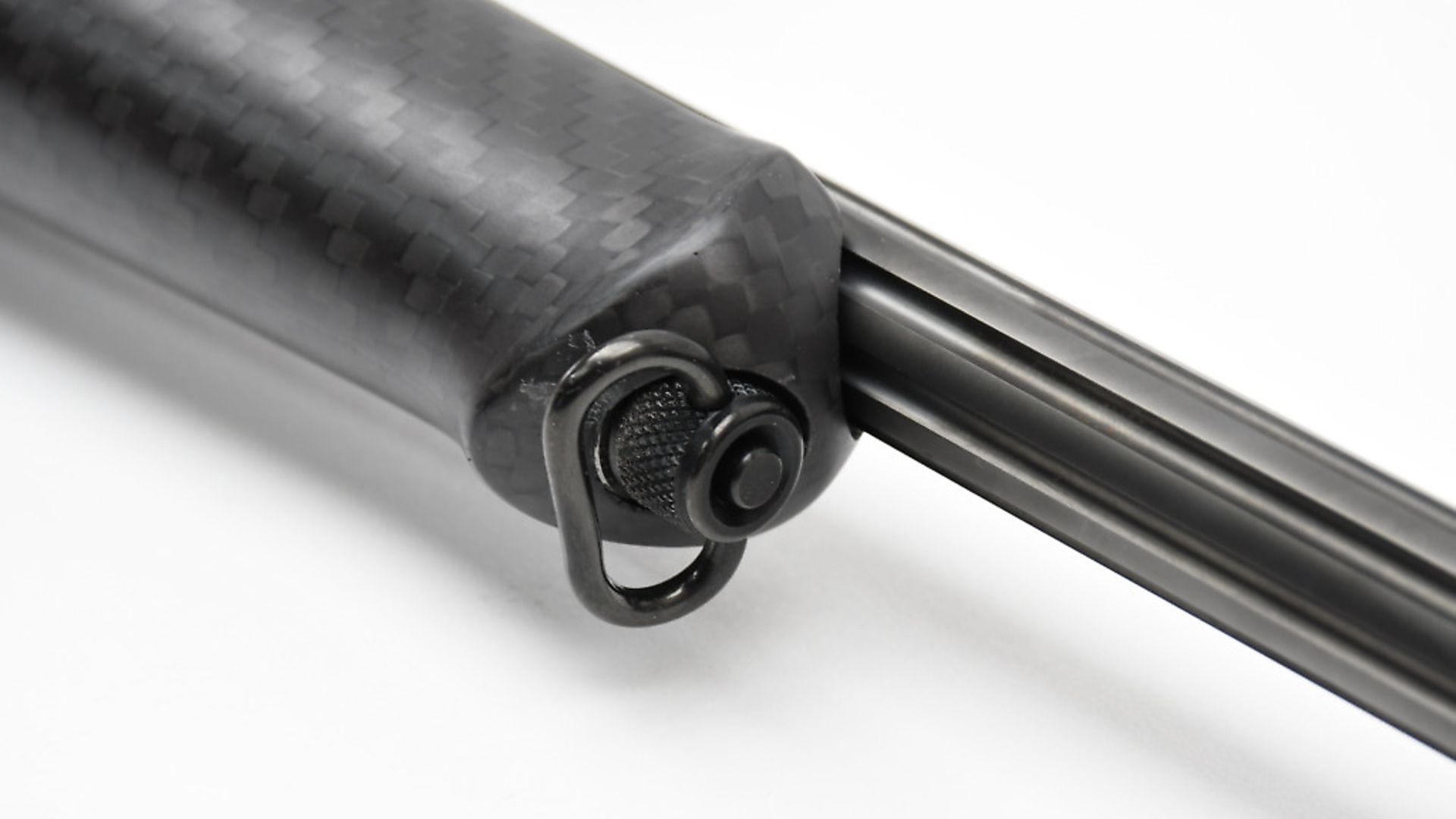 credit: Archant
credit: Archant
Hand-built perfection
Items like this illustrate the hand-built nature of the stocks and although you never really notice any discrepancies in handling like flexibility or compressions, this unit weighs in at just 650g – it’s like a feather! There are no bulky fillers or artificial sound dampeners for recoil absorbing properties; it really is a ghost in a shell.
Considering the light, slender fore-end design, it retains just enough size to allow comfortable hand hold without fingertip contact on the barrel and, perhaps most importantly, the 2mm free-float is retained from all shooting positions including aggressive bipod pressures, it is that stiff. I take my hat off to Sauer because fillers in composites (of all types) are often used to conceal untidy laminations before the bulk is machined away to create action inlets and the like.
You will notice the tube that accepts the bipod in that fore-end should you choose to shoot with one, but it seems a shame to add any weight to this rifle. Although named the ‘Highland’, I was using it as a woodland rifle through the test period where I found the weight and balance most appreciable. The silent transfer from shoulder to shooting sticks in close confines was breathtakingly slick.
A single hand on the grip is all that is required to spin the gun onto the sticks, and it feels like a long-barrelled pistol. This also translates to ease of movement when getting into position or using improvised rests or in the confines of a vehicle. Sauer have their own titanium moderator, which complements the rifle beautifully. Lightweight at 296gr, it balances the rifle with just a slight nose heavy feel.
If the rifle were to be absolutely neutral in balance, it would almost feel a little ‘floaty’, but the delicate forward weighting gave it that all-important pointability. I used a Minox 3-15x56 optic and Hexalock rings for what I deemed an ideal package paired with Blaser’s new carbon sticks. Titanium moderators perform well in all but extended firing strings, as they heat up quickly and radiate it just as fast, so you can get excessive mirage – but let’s not forget this is a stalking rifle and the Sauer mod is perfect for that application.
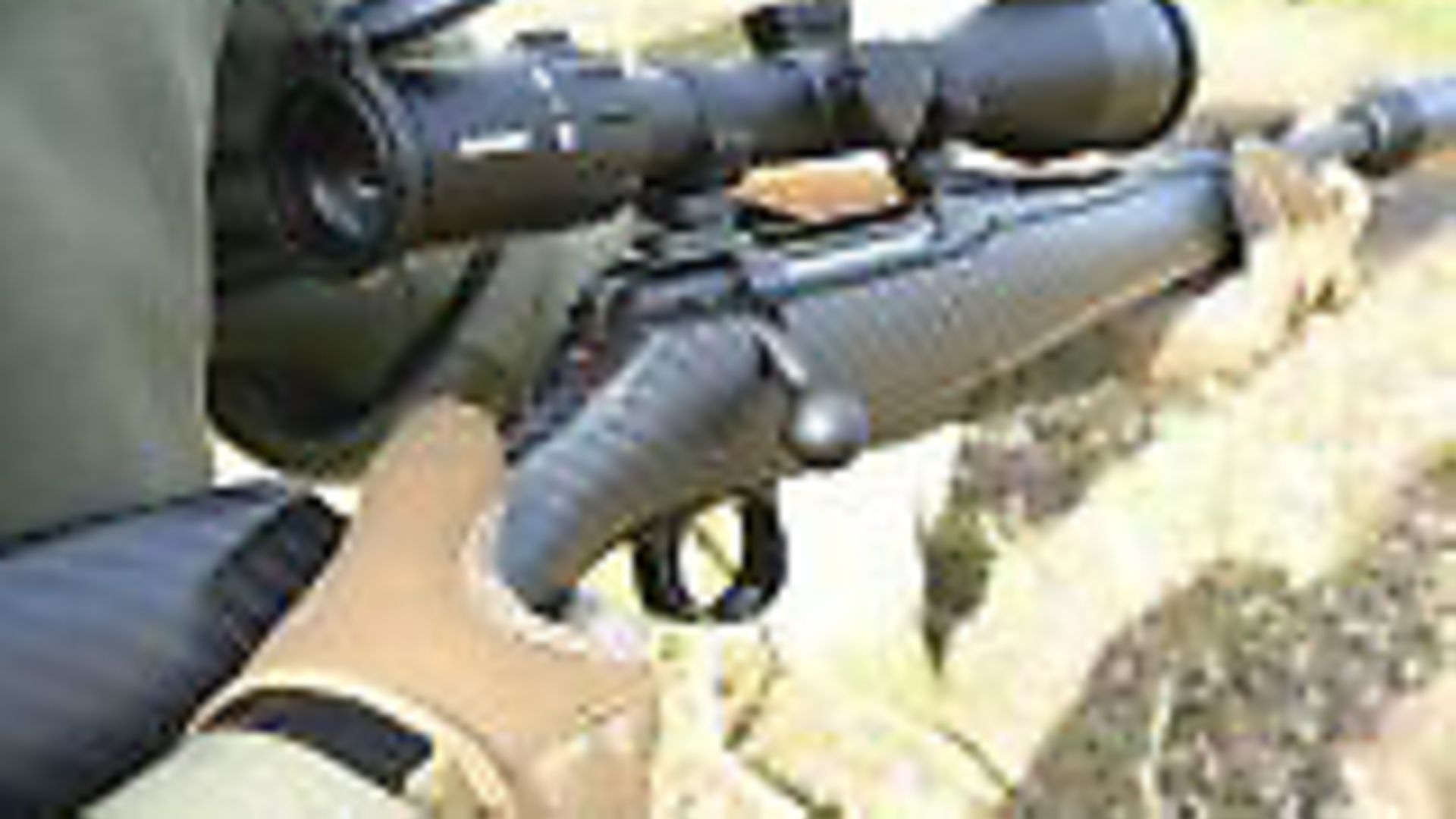 credit: Archant
credit: Archant
Field perfomance
On the range from sticks and bench, none of the 123/150/165 or 178gr ammunition showed any fault. MOA groups are assured within the 10-year warranty and posed no issue. I was wary of the recoil feel being too lively, but the moderator mitigated my concerns. Another delight of carbon is the directional stiffness to soften the blow of recoil and minimise sound resonance. This .308 was lively, but well balanced and I don’t think .30-06 (which I prefer anyway) would be any worse. I feel the ‘06’ gives a softer, if longer recoil pulse than the .308 and handles bullets in the 180gr range with more discretion.
The Sauer was noticeably livelier with the 178 gr ELD-X, seeing bullet impact was harder at 200m and the follow-up shot required a little more recovery to point of aim, but I enjoyed shooting it and detected none of the resonant concussion that transmits into the cheekbone with unruly rifles and poor ergonomics in the comb.
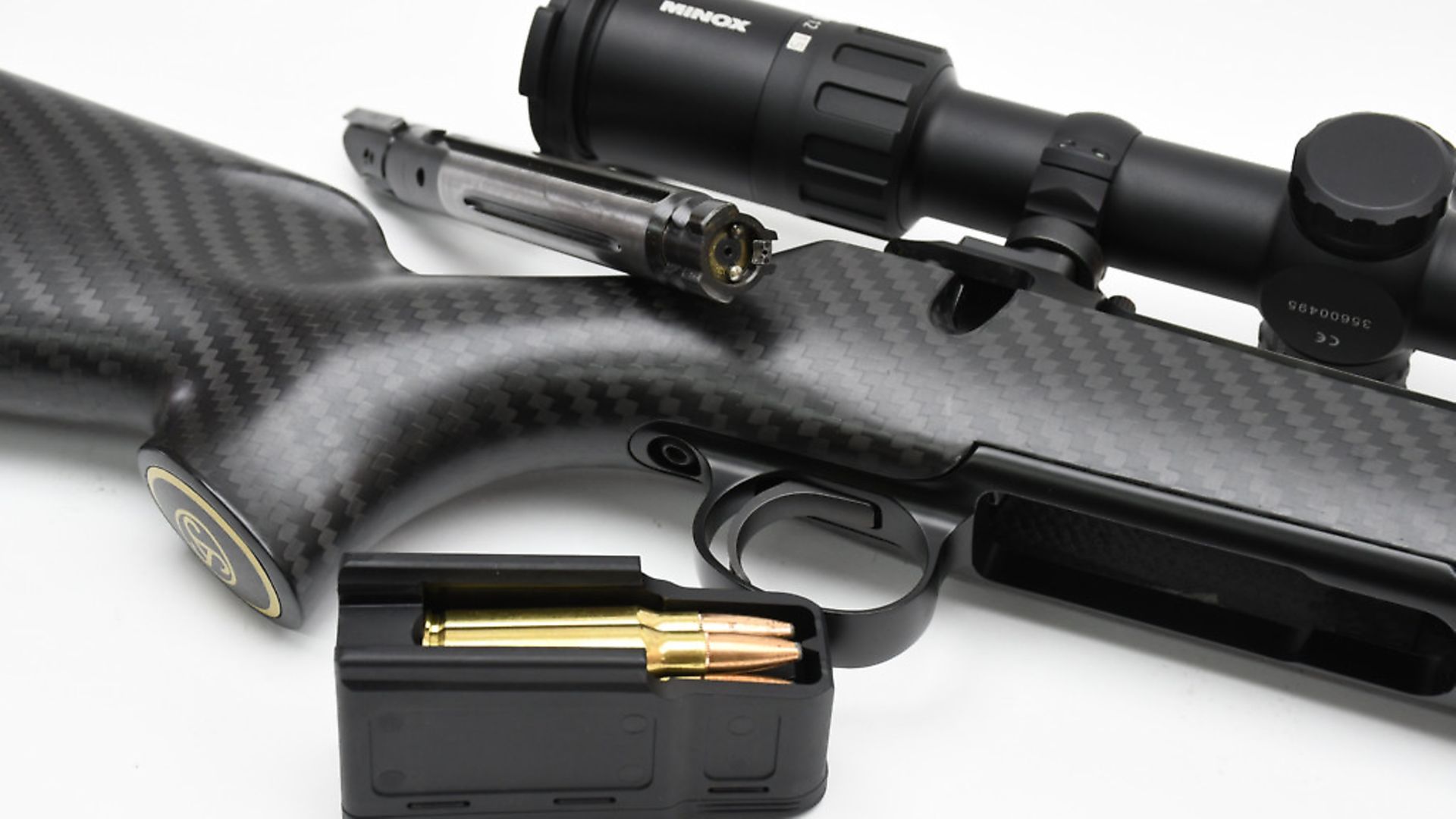 credit: Archant
credit: Archant
Muzzle velocities:
Sako Game Head
123gr, 2,873 fps, 2,255 ft/lbs
Federal Soft Point
150gr, 2,712 fps, 2,450 ft/lbs
Hornady Superformance SST
165gr, 2,645 fps, 2,563 ft/lbs * (*best on test with 15mm five-round group @100m)
Hornady ELD-X
178gr, 2,478 fps, 2,427 ft/lbs
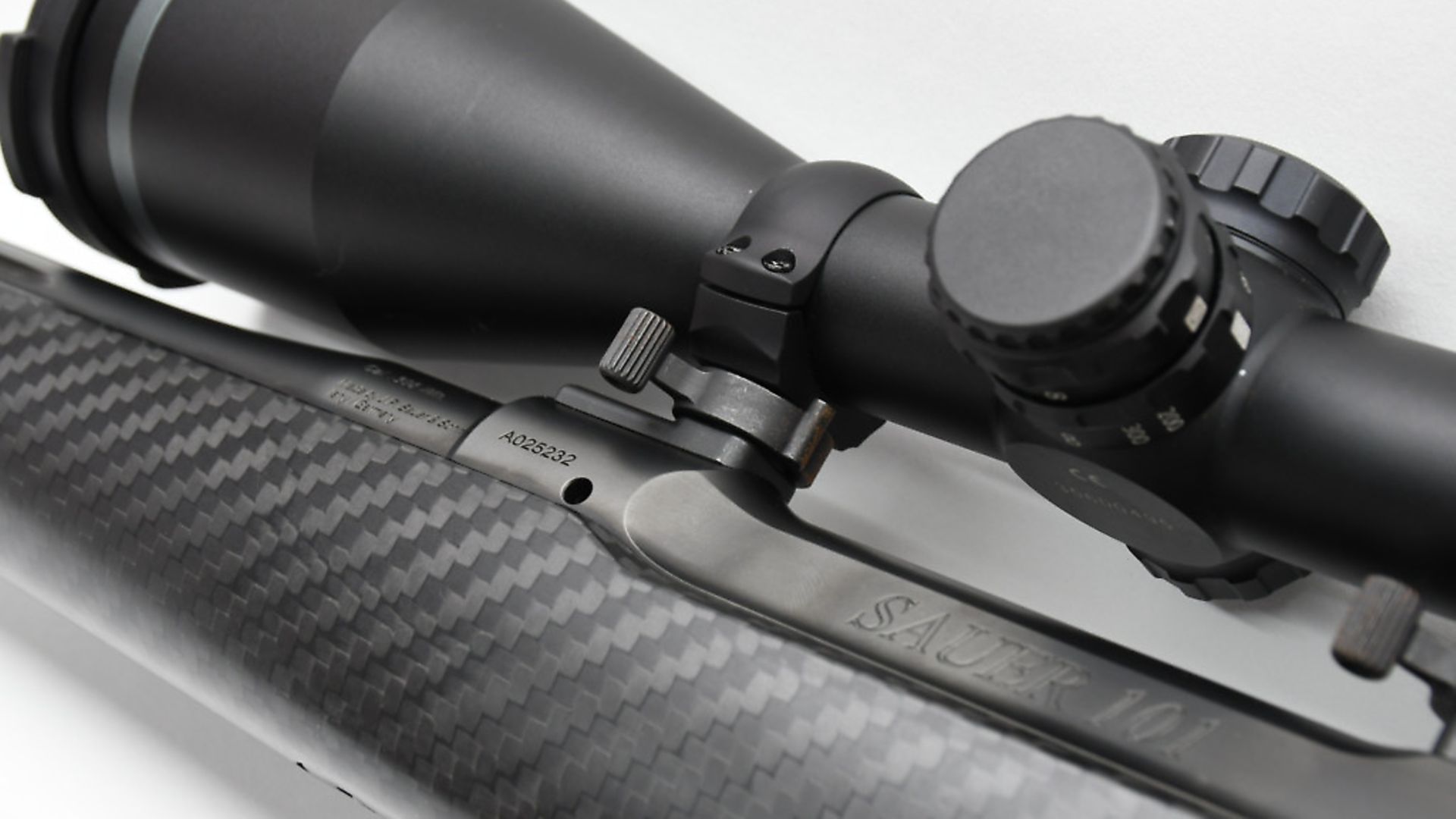 credit: Archant
credit: Archant
Summing up, I get the feeling that beyond £1,000, you aren’t really improving on the immediate ergonomics and function of a rifle to place bullets on target for hunting. Differing operating systems and mechanism come into play but a grand is my baseline for rifles that do it with finesse.
Small details, adornments and personalised factors will start to appear and once you get to engraving, it’s all about looks. I remember learning about form following function, and REAL carbon fibre’s appearance conveys that with ease, but when you look at the broader detail behind the gloss coat external, engineering and ergonomics reveal themselves and I really think my spending goals have changed.
A stock like this is worth beyond its weight in gold (about £2,700 for 650gr). Never mind carbon fibre, it is about so much more than physical mass alone.
Sauer have made a rifle of 2.5kg and do you know what, it was, to the exact gram, not just marketing hype. This is a fine sporting rifle, maybe not the right solution for everyone’s needs, but one of the few that truly justifies its price, paying you back with exceptional real-world handling benefits.
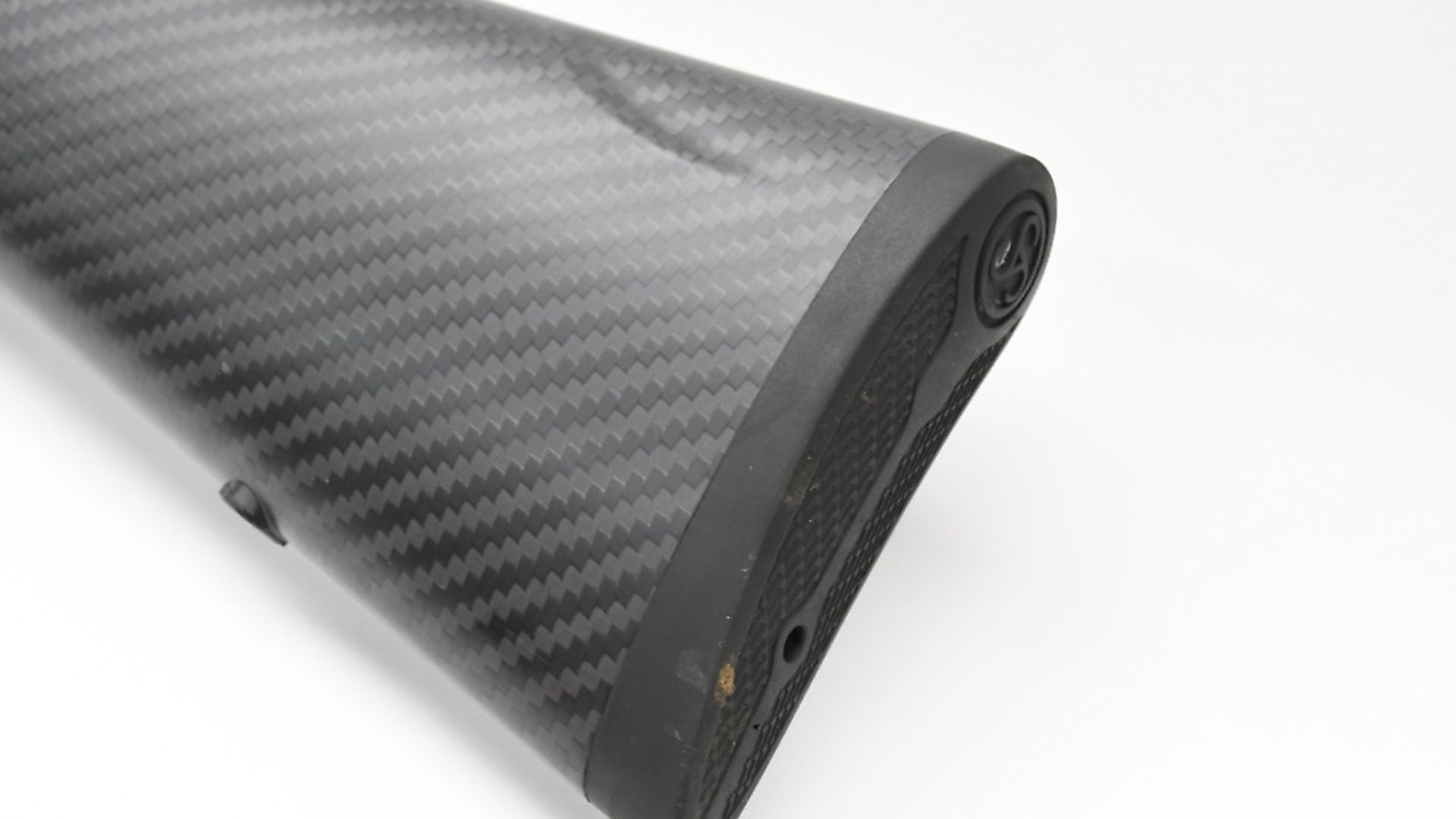 credit: Archant
credit: Archant
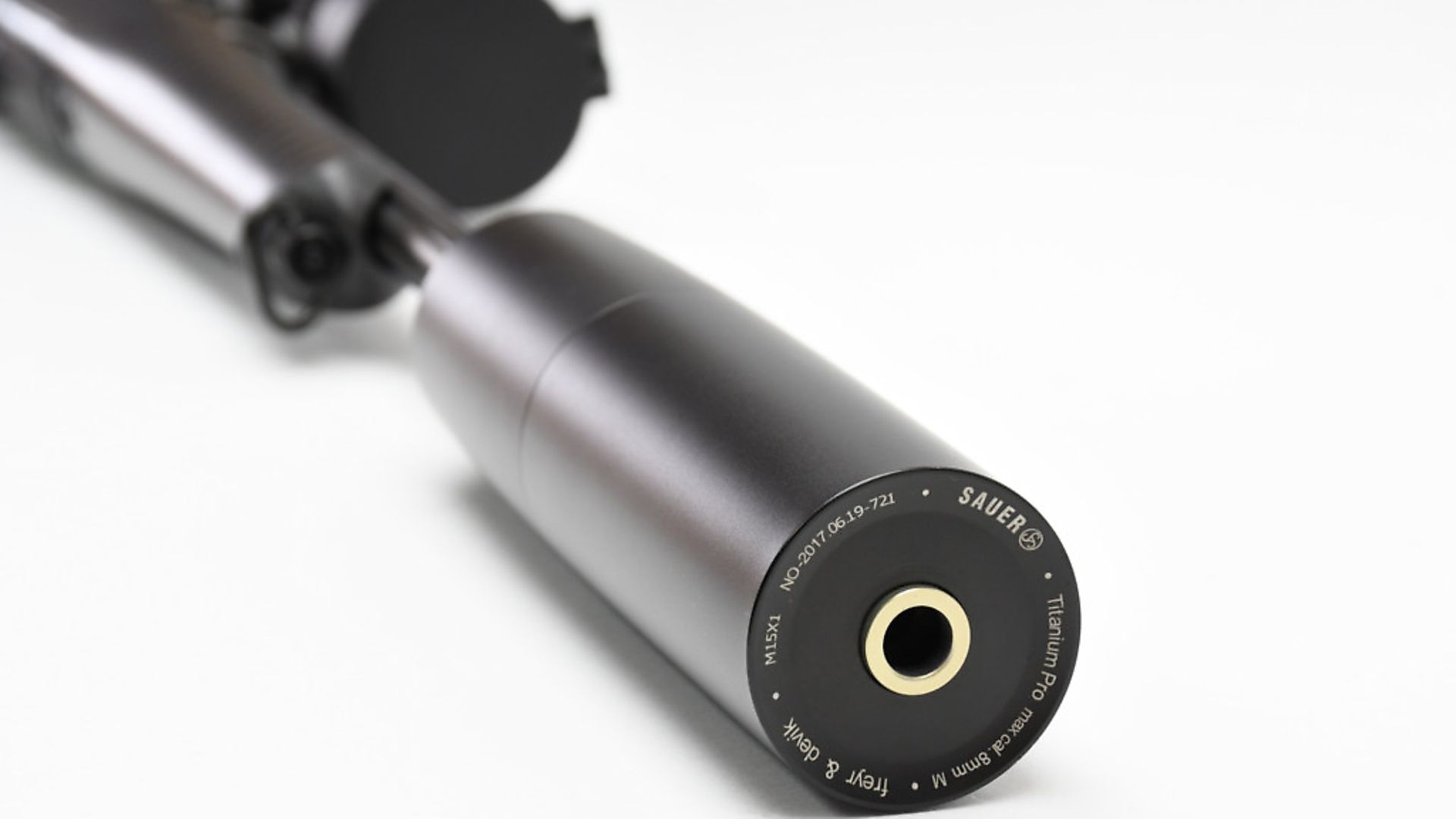 credit: Archant
credit: Archant